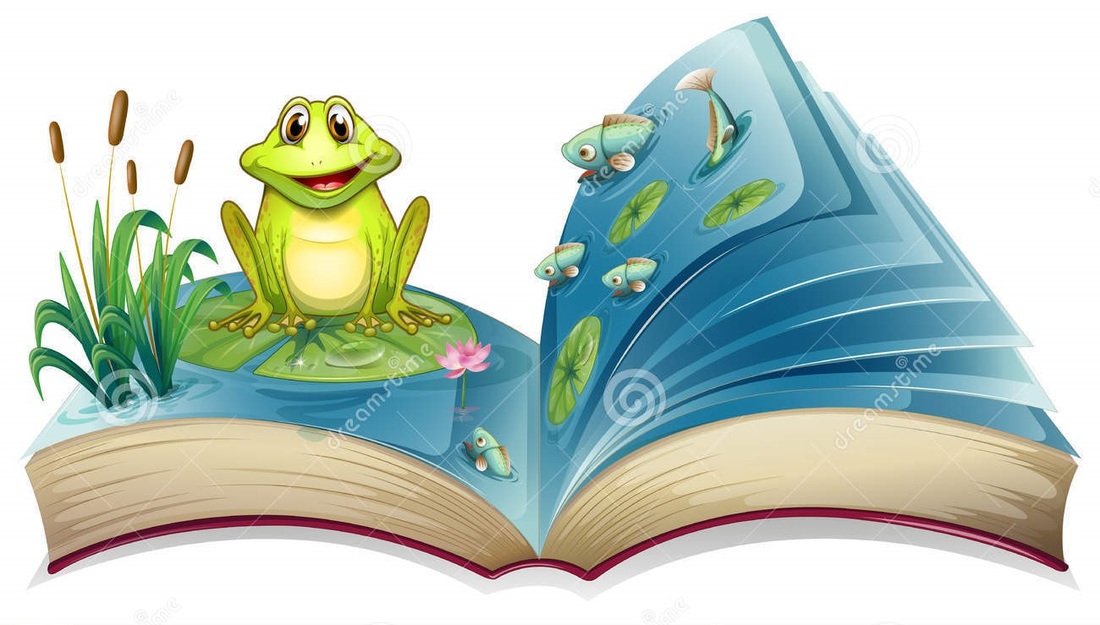Storytelling is the oral presentation of a story and predates the written word. Stories were often told combining gestures and facial expressions as a visual means of getting the story's point across. Little has changd today. What parent hasn't "huffed and puffed" as they told the story of the Three Little Pigs to their child...just as their parents and done for them? Australian aboriginal peoples painted symbols from their stories on the walls of caves to help the storytellers remember the details. That way, each time the story was told, the same information, more or less, could be passed on. They would then combine their oral presentations with music, rock art, and dance to bring the story to life. Other peoples have used carvings on live trees and ephemeral media (lasting only a short itme) such as sand and leaves to record stories in pictures...with or without words.
Folklorists often will divide storytelling into two groups. Märchen which loosely translated from German means fairy tale(s) and take place in the "once upon a time" realm and nowhere-in-particular and in an indeterminant time in the past. They are not intended to be taken as truth. The characters are flat and have no interior life. But these stories comprise well-defined incidents and people. Supernatural events are common in these stores and are explained in a matter-of-fact sort of way. Blood-curddling events can be told, but they elicit very little emotional response from the listener. Sagen, or legends, are stories of things that supposedly did, in fact, happen at a very specific time and place. Sagens draw their power from these facts. Here, however, when the supernatural happens (as it often does) it does so in an emotionally-fraught manner. Lover's leap, ghost stories, and UFO stories come under this category.
Storytelling is a means of sharing and interpreting experiences. Human life, I've often read, is deeply-rooted in narratives. "Humans construct their lives and shape their world into homes in terms of these momories and groundings," so says author Peter L. Berger, an Austrian sociologist. Stories are universal. They can bridge culture, linguistic, and age divides. Storytelling can be adapted to all ages. Storytelling can be used to teach ethics, values, and cultural norms and differences. Stories, then, are a tool for passing on knowledge.
Stories have three parts. 1. The hero's world before his adventure begins. 2. The confrontation when the hero's world is turned upside down and 3. The resolution where the hero conquers the villian, or overcomes his challenges. But this isn't enough. The hero, or his world, must be transformed by the event. Storytelling is a wonderful educational tool. Listeners become engaged and will remember what they learn. If you're like me, you've had teachers could make even the dullest subjects seem fascinating. You couldn't wait for their class each day. And I bet you can still rememer most of what they taught you! That is the art, and effect, of good storytelling.
I could go on and on about storytelling; it's an endlessly fascinating subject full of rich examples and wonderful tidbits of information that explore the growth of society and how man has developed throughout the ages. I am grateful for storytellers. Without them, I would never have the opportunity to write stories for my young friends. Storywriting allows me to teach young kids about things that interest me; things that I hope might stir their interests as well. My new storybook, Twig Toad's Terrible Trouble
teaches children a valuable lesson that I hope will help to keep them safe.
I don't know if I'll ever write another story, but I do know that my little little story has a long and powerful lineage. Stories, whether wtitten or spoken, will be around for as long as there are humans (and, hopefully, frogs). Stories are life and without the earliest of them, humans may not have survived. Stories keep people safe. They educate. They entertain. I am proud to be an author. I am helping to shape young minds in a positive way. And it doesn't get any better than that!

 RSS Feed
RSS Feed